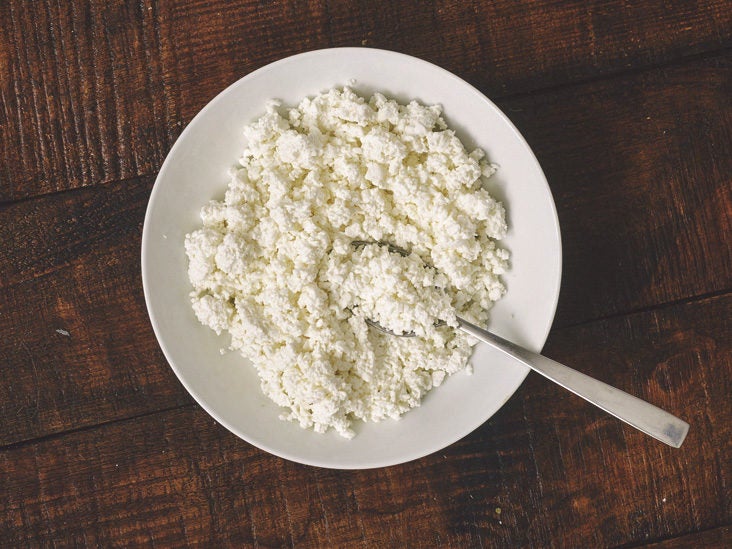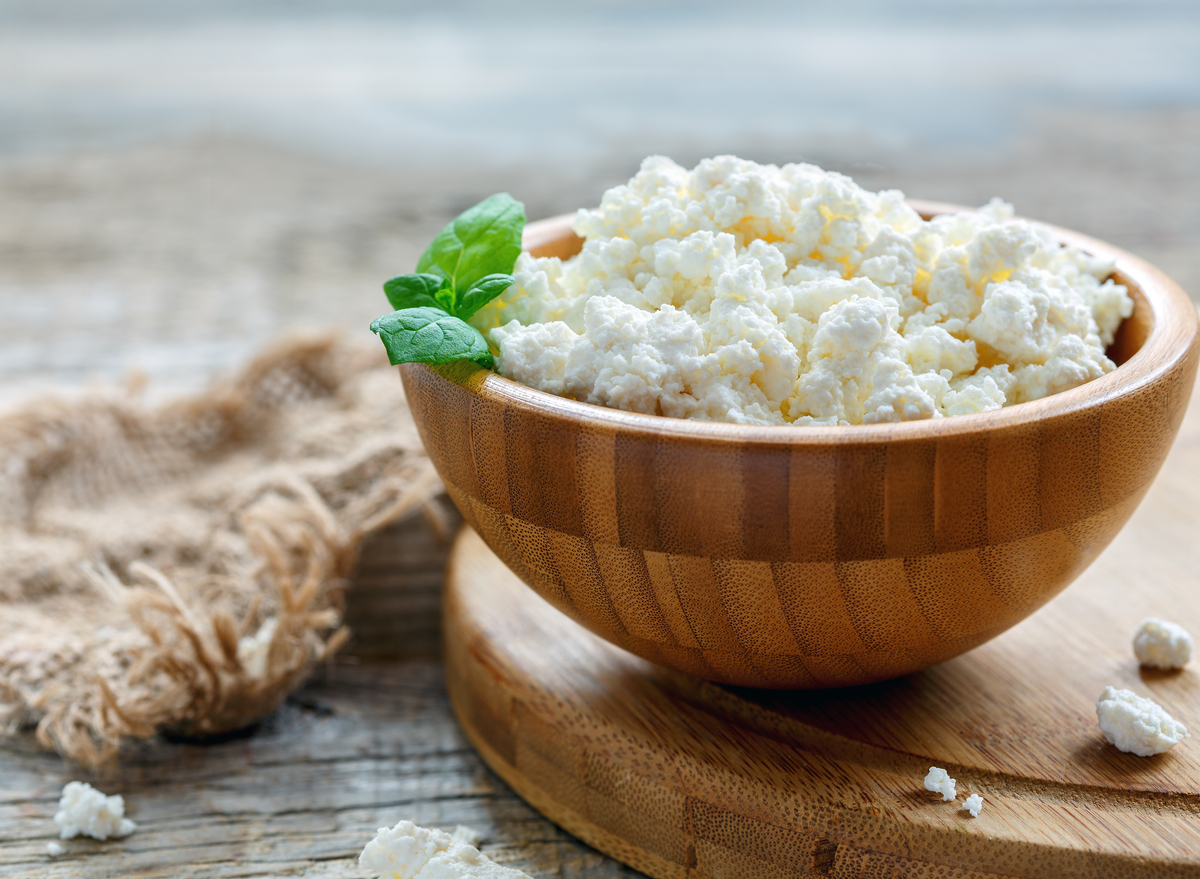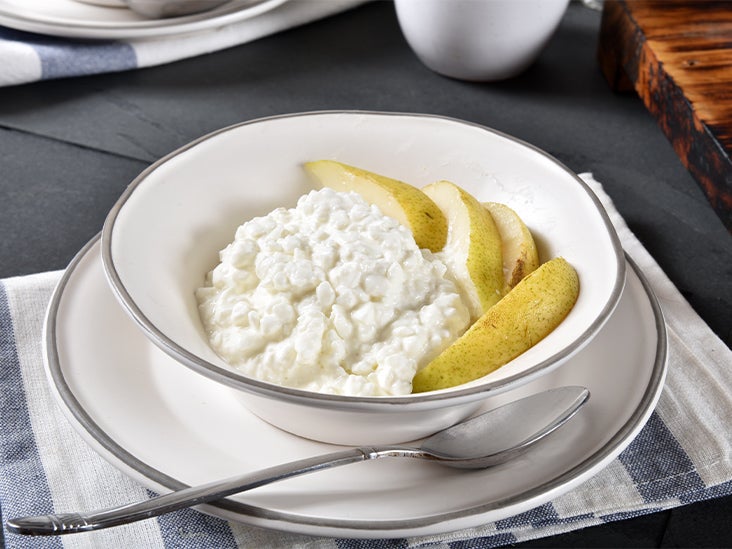- Fact Checked
Last Updated: August 29, 2022
Non-dairy cottage cheese is a vegan-friendly alternative to traditional cottage cheese. So, whether you recently started a non-dairy diet or are simply looking to switch up the foods you regularly eat, you might be wondering—can you make non-dairy cottage cheese at home?
Yes, you absolutely can. And you can even make it vegan by selecting plant-based mayonnaise.
Best of all, you don’t have to spend lots of money or time to make it happen. We’ll share our favorite vegan, non-dairy cottage cheese recipe with you and offer suggestions on how to flavor it.
Making non-dairy cottage cheese at home is fast and easy.
Non-dairy cottage cheese is delicious straight from the bowl. However, it’s also an excellent vegan and dairy-free cheese replacement in recipes like casseroles and lasagna.
You can even spread some on a sandwich as a condiment. Alternatively, try a dollop on a salad, slice of toast, or pancakes. The options are truly endless!

The non-dairy cottage cheese recipe we’ll be sharing here has the following characteristics:
It can also be a good option for people following a low carbohydrate or keto diet, given that it has a high fat, moderate protein, and low carbohydrate nutrient makeup.
That said, it’s worth mentioning that this recipe contains soy. If you’re trying to avoid soy, you might be able to use tofu from a non-soy source. But we haven’t tried this ourselves, so we can’t comment on how it would turn out.
You might need to go to the grocery store to stock up on ingredients for this non-dairy cottage cheese. But if you’re like us, once you taste how delicious it is, you’ll keep your pantry stocked with ingredients so you can make it whenever the feeling strikes.
Below are the ingredients you’ll need to make non-dairy cottage cheese:

Optional ingredients include:
If you’re unfamiliar with miso, it’s a fermented Asian condiment made from soybeans and koji. About 1,300 years ago, when the Chinese developed miso, they saw it as a luxury food. Some people even used it to pay the salaries of upper-class people.
The good news is that miso is economical and readily available nowadays. Since it needs refrigeration, you’ll find it in the cold section of your grocery store, usually in the deli section. If you can’t find it there, try visiting a Japanese market or natural food store.
If you’ve tried to make non-dairy cottage cheese in the past, you might have been disappointed by its consistency or taste. Many non-dairy recipes involve soaking nuts or fermenting. During our trial and error, we’ve also had recipes turn out with a lemony flavor.
But the recipe we’re sharing here doesn’t make you jump through hoops to make delicious non-dairy cottage cheese. It even has a similar consistency to cottage cheese, and the taste is surprisingly close to the real thing.
All you need to make this non-dairy cottage cheese is the ingredients on your counter and five minutes of your time. Below are easy step-by-step instructions.
Firm tofu comes packaged with liquid. So, drain the water and then use paper towels or tea towels to soak up the extra moisture. You don’t want your cottage cheese to be too liquidy, so take your time to get as much excess water out of the tofu as possible.
Once you’re satisfied with your tofu’s moisture content (or lack thereof), place it in a medium-sized bowl.

Using a small bowl, you’ll need to use a whisk to mix the following ingredients:
Once the mixture is nice and smooth, you can add some salt. If you’re not the type of person that’s good at guessing the quantity to throw in a recipe, we recommend starting with ⅜ of a teaspoon. You can always add more if you feel the recipe needs it.
Alternatively, use less or no salt if you’re trying to cut back on sodium.
We suggest using up to a half-cup of vegan mayonnaise in this recipe. However, starting with at least half the amount is best, and gradually mixing in more if your cottage cheese seems too thick.
The reason being is that vegan mayonnaise differs in how liquidy it is. But it almost always has a more liquid consistency than non-vegan mayonnaise.
So, put your cooking skills to the test and use the motto that less is more as you play around with finding the right balance of mayonnaise. Make sure to jot it down for next time if you’re the type of cook that loves specific measurements.
Should you wish to use onion powder or garlic powder in your cottage cheese, this is the time to add them.
Personally, we love the flavor of mixing in both of these spices. However, you’re welcome to experiment with whatever dry spices you’d like. May we suggest adding a little cracked black pepper?
If you want to use fresh herbs in your cottage cheese, hold yourself back from adding them; there’ll be time for that shortly.
Pour the wet mixture you just whisked together into your bowl of tofu. Then, use a masher to chop up the tofu. Doing so will automatically blend the vegan mayonnaise, miso, and water into the tofu to evenly spread around the flavor.
It’s important to find a balance between mashing the tofu well but not overdoing it. Otherwise, your non-dairy cottage cheese will turn into a thick soup rather than the small chucks reminiscent of traditional cottage cheese.

At this point, you should also mix in your one to two tablespoons of fresh chopped herbs, should you wish to add them. It’s important to wait until after you chop up the tofu so that you don’t go overboard with mincing the herbs.
Although you can technically eat your vegan non-dairy cottage cheese immediately after making it, we recommend sticking it in your freezer for a couple of hours.
Between the cold temperature and giving the ingredients time to soak into the tofu, the flavor becomes more cottage cheese-like once the mixture spends some time in the fridge.
If you manage not to eat all your cottage cheese in one sitting, store it in an airtight container. That way, it’ll prolong its refrigerator life, which is up to around three days.
[thrive_leads id=’11437′]
Our vegan non-dairy cottage cheese is a lower carbohydrate and relatively high-fat food, which follows a similar macronutrient profile to traditional dairy cottage cheese.
While the exact nutrient breakdown will vary according to the type of mayonnaise and tofu you buy, along with the amount of salt you add, below is a general guideline of what you can expect from a quarter cup of this dish.

The vegan mayonnaise in this cottage cheese is the primary culprit for its high levels of fat. So, if you’d like to reduce the fat content, you can try choosing a low-fat mayonnaise variety.
If you do so, take care when adding it to your recipe, for it might have an even thinner consistency than regular vegan mayonnaise.
The non-dairy cottage cheese recipe we covered here tastes similar to cottage cheese, although, like most vegan substitutes, it’s not a perfect match.
Unlike traditional cottage cheese, you might notice a slight soy taste in your mouth after you finish eating it. That’s because soy often leaves an aftertaste because of its oxidized phospholipids, fatty acids, saponin, and isoflavones content.

That’s a lot of jargon to say that there’s a reason most people add flavoring to soy instead of eating it straight out of the package.
Once you get the hang of chopping the tofu into the right-sized pieces, the texture is similar to cottage cheese. And as studies show, a food’s texture can impact how you taste it since thicker foods slow the rate of flavor and smells.
Once you taste this non-dairy cottage cheese and see how quick it is to make, you might have to hold yourself back from eating it every day.
Remember, you can use cottage cheese for more than just a side dish. It’s an excellent vegan cheese substitute for a dollop of “sour cream” on baked potatoes and layers of cheese in lasagna.
A single batch of this non-dairy cottage cheese makes just shy of 16 ounces. So, feel free to double or triple the batch if you want to use more.
https://www.marukome.co.jp/global/en/foodculture/aboutmiso/originandhistoryofmiso/
https://www.webmd.com/diet/health-benefits-cottage-cheese
https://www.farmtoconsumer.org/blog/2013/07/09/soy-milk-why-its-not-a-healthy-udder-alternative/



At VL, our story is one of overcoming the challenges life has thrown our way. We’ve faced personal and professional setbacks, endured mental and physical struggles, and emerged with a deep understanding of how to live with intention. Over the past 35 years, we’ve committed to building a life centered around health, happiness, and purpose. This site is a result of those experiences, designed to help others, like you, navigate times of change and discover opportunities for growth. We would be honored to have you join us on this path toward a fulfilling future.
Address: 1300 Avenida Vista Hermosa, San Clemente, CA 92673, United States | Phone Number: +1 (949) 248-0131 | Email: contact@veganliftz.com